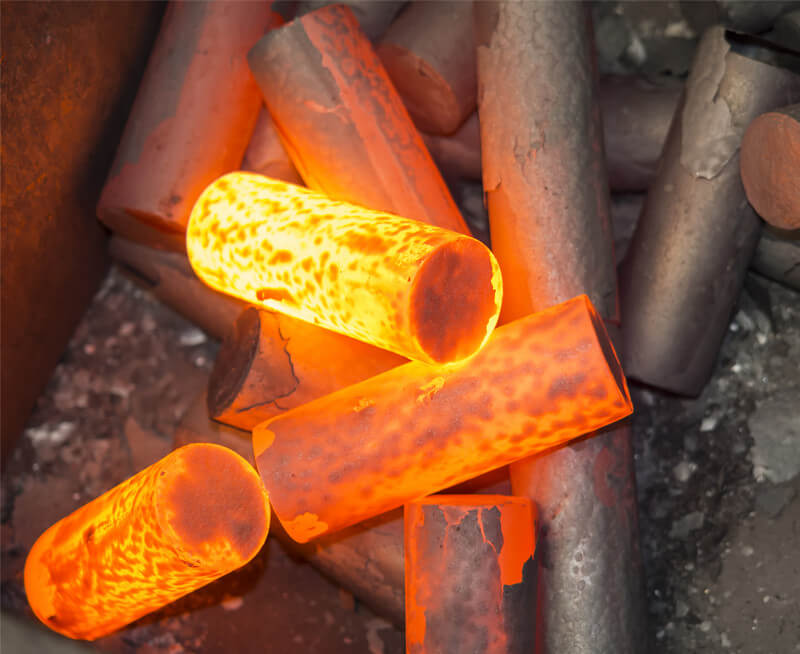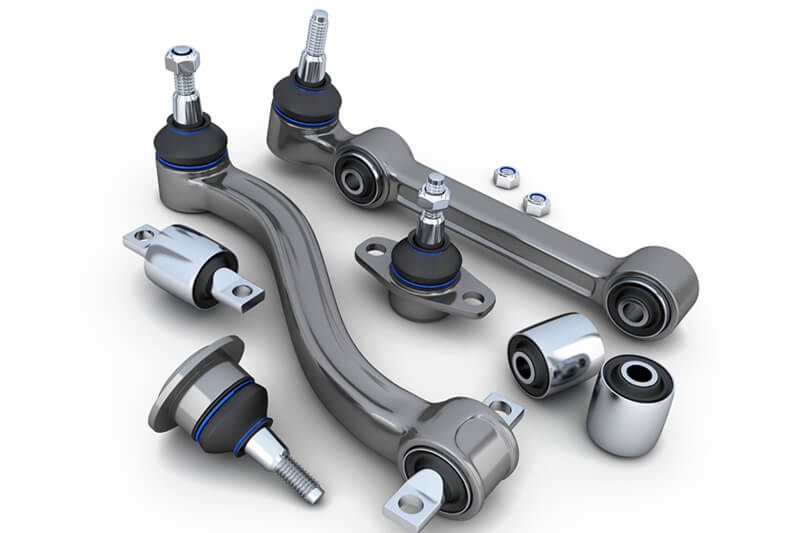
A3 steel and Q235 (A, B, C, D) steel
June 11, 2021
42crmo Steel Forging White Dot Study
July 11, 2021Automotive Parts Manufacturing Process – Forging
Forging has a long history in China, which is carried on by hand workshop production. Probably at the beginning of the 20th century. It is gradually in the form of mechanical industrialization of production in the railway, military, shipbuilding, and other industries. The main hallmark of this transformation is the use of machines with strong forging capabilities.
Forging methods are widely used in the manufacture of auto parts, including valves, columns, shaft tiles, time gauges, overhaul bags, pistons, piston rings, linkages, crankshafts, and so on. With the progress of science and technology, the precision requirements of workpieces continue to improve. This has led to the development of more precise forging technologies, including cold forging and others.
Definition and Classification Of Forging
-
Definition of Forging
Forging is a forming method of applying pressure to the metal blanks using forging machinery to produce plastic deformation to obtain a certain shape and size. By forging, you can eliminate defects such as casting looseness common in the heating process. The method preserves the metallurgical grain structure of the forged metal hence better mechanical properties than castings of the same material.
-
Forging Classification
Depending on the production tool, forging technology can be divided into four categories:
Free forging: refers to the processing method of forging with simple generality tools or applying external force directly to the blank.
Mold forging: refers to putting the metal blank in a mold or die and press to plastic deformation to obtain the desired shape and size.
Drum: Refers to the production of different diameters of ring parts through a special equipment ring mill. Widely used to produce car wheels, train wheels, and other wheel parts.
Special forging: This includes forging methods such as roller forging, wedge rolling, radial forging, liquid die forging.
-
Forging Materials
Forging materials are mainly carbon steel and alloy steel. They are followed by aluminum, magnesium, copper, titanium, and other alloys such as iron-based high-temperature alloy and nickel-based high-temperature alloy. Cobalt-based high-temperature alloy deformation alloy is also done by forging or rolling. These are the most common defects:
Forging Defects And Analysis
Internal or surface defects in ingots are sometimes unavoidable. Coupled with the improper forging process during forging, it eventually results in defects in the forging. Here’s a quick look at some of the common defects in forgings.
-
Forging Defects Due To Defects In Raw Materials Are Usually
Surface cracks
Surface cracks occur mostly on rolled and forged rods, generally in a straight line shape, consistent with the main deformation direction of rolling or forging.
Fold
Folding occurs when the metal blank is rolled with the groove diameter on the roll incorrect. Folding may cause the forging to fold or crack if it does not fall off before forging.
Scarring
Scarring is a peelable film in a local area of the rolling surface caused by a splash of steel liquid during casting condenses on the surface of the ingot.
-
Defects Arising From Improper Preparation And Their Effects On Forgings
Cut obliquely
The cut slope is when the cutting is under the sawing or punching bed. It occurs when the rod is not pressed, resulting in the blank end surface.
End crack
Cracks in the ends are often found after cutting large section alloy steels and high carbon steel rods in a cold state. As it gains room temperature, the material starts restoring its original shape, and cracks may appear.
Gas cut cracks
Gas cutting cracks are generally located at the end of the blank and is caused by gas cutting before the raw materials are not warmed up.
-
Defects Often Resulting From Improper Heating Processes
Decarburization
Decarbonization refers to the carbon oxidation of the metal on the surface below the high temperature, making the carbon content of the surface significantly lower than that of the interior.
Carburet
This a defect where the carbon thickness on the material is very high. The defects mostly occur in forgings heated by oil furnaces.
Overburned
Over-burning occurs heating temperature of metal blanks is too high or stays in the high-temperature heating area for too long.
-
Defects Often Resulting From Improper Forging Processes
Large Grain
Large grains are usually caused by excessive starting temperature and insufficient deformation, or high-end forging temperature.
Uneven Grain
Uneven grain is where forging grain is particularly large in some parts and smaller in other parts. The defect is caused by uneven deformation of the blanks.
Flying edge cracks
Forging fly-edge cracks are cracks produced at the split-mold surface when forging and cutting edges.
-
Defects Often Resulting From Improper Cooling Process After Forging
Cool the crack
During the cooling process after forging, the internal forging will produce large thermal stress that may exceed the strength limit of the forging to cause cracks.
Mesh carbide
The defect occurs when steel stop forging temperature is high, and the cooling speed is too slow. It will cause carbide along the crystal boundary meshed out.
-
Defects Often Resulting From Improper Heat Treatment After Forging
Hardness is too high or hard enough
The defect can be caused by the too low quenching temperature or when positive fire cooling too fast.
Uneven hardness
The main reasons for the uneven hardness caused by forging are improper heat treatment process regulations.
-
Defects Often Resulting From Improper Forging Cleaning Processes
Over-cleaning
Over-washing of forging acids can cause the surface of the forged product to be loose and porous.
Corrosion cracks
If there is large residual stress after forging a horse’s stainless steel forging, it is easy to produce a small mesh corrosion crack on the surface.




